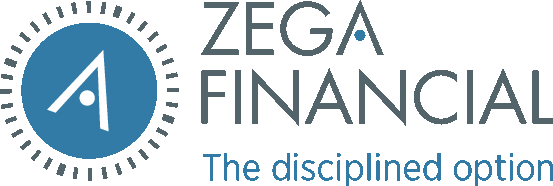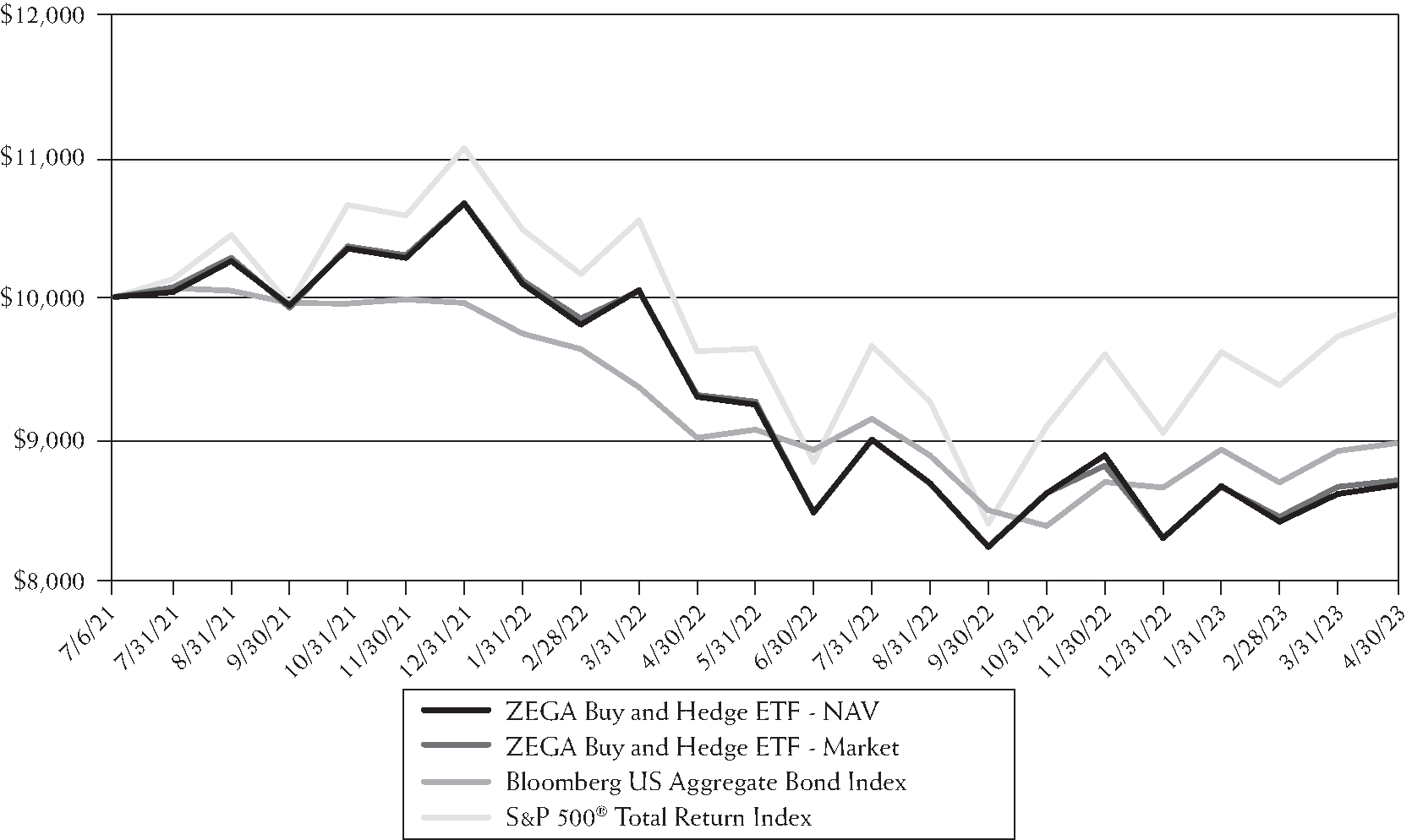Dear Shareholders,
When we developed the ZEGA Buy and Hedge ETF (the “Fund”) in 2021, our goal was to construct a portfolio that targets long-term equity returns via the S&P 500® Index (the “S&P 500®”) while taking less risk.
There are currently two main steps in the process:
1)Utilizing long deep-in-the-money call options and long put options on either the S&P 500® or the SPDR® S&P 500® ETF Trust that represents control of a commensurate notional value of equity exposure while seeking to limit the equity losses to a -8% to -10% level over a 12-month period. At the same time targeting an upside capture of between 70% to 75% over a 12-month period; and using the remaining cash to build a portfolio of yield bearing securities to help offset the cost of our protective downside exposure thus reducing our cost of hedging.
2)Most of the yield bearing portion of the Fund’s portfolio is made up of U.S. Treasuries with a smaller allocation to U.S. high yield short duration fixed income positions.
Performance Update
Since the Fund’s last fiscal period ended on April 30, 2022, we’ve seen an aggressive Federal Reserve (the “Fed”) continue hiking rates, mixed economic news, and persistent Core Personal Consumption Expenditures Price Index (“PCE”) readings above the Fed’s stated target of 2%, hitting levels not seen since the early 1980s.
Fixed income markets were put under pressure with rising interest rates.
Equity markets declined, making several new bear market lows before putting in its ultimate low for 2022 in October.
While corporate earnings on S&P 500® companies rose in aggregate on a year-over-year basis in 2022, the multiple (forward price-to-earnings ratio) declined as investors went through a re-rating of how much they would pay for future earnings.
So far in 2023 through April 30, equity markets have rallied despite flat to lower quarterly earnings growth on a year-on-year basis. The increase has been due to an expansion in the forward P/E multiple. Particularly significant is the rally in the mega-cap tech sector driven in part by investor interest in AI (artificial intelligence).
The Fund’s year-to-date total return from January 1, 2023 through April 30, 2023, was +4.47% compared to its benchmark, the S&P 500®, which returned +9.17%.
The asset allocation in the Fund was designed to target a downside risk of -8% to -10% over a 1-year time horizon. For the 1-year period ended April 30, 2023, the Fund had a total return of -6.67% (NAV), while the Bloomberg US Aggregate Bond Index and the S&P 500® Total Return Index had returns of -0.43% and 2.66%, respectively.
The Fund’s strategy performs best:
•When equity markets move materially higher, thus presenting the opportunity to capture a good percentage of the upward movement.
•When equity markets go down materially, thus presenting the opportunity to utilize hedging profits to reinvest into more long equity exposure at reduced levels.
During times of flatter markets, the Fund will tend to underperform due to the cost of hedging.
Over the past fiscal year ended April 30, 2023, we opportunistically made two key adjustments. In late September of 2022, as U.S. Treasury bills and/or bonds with shorter maturities saw higher yields to maturity (YTM), they became a viable alternative to short duration high yield bonds. Seeing this, the team adjusted the yield bearing portion of the Fund’s portfolio by swapping the majority of short duration high yield fixed income for shorter duration U.S. Treasuries.
While the sensitivity to changes in interest rates (duration) remained similar, the credit risk inherent in high yield was upgraded by switching to the highest-rated U.S. Treasuries. At April 30, 2023, the Fund still maintained a small allocation to short duration high yield fixed income.
In early March 2023, we made another opportunistic adjustment relying on our extensive option market experience. Due to changes in interest rates (an input to the option pricing model), the value of the extrinsic premium contained in the price of calls relative to the price of puts became materially higher. Realizing this, the Fund saw adjustments by using deep-in-the-money call options (which have little extrinsic premium) paired with protective put options to still be in a position to capture 70% to 75% of the upside while targeting to limit equity losses to -8% to -10% over a 12-month period.


